Finally, the True Ultimate Decorative Surface
It amazes me that it’s been almost 32 years since I was invited to join the Conservation Analytical Laboratory (CAL) of the Smithsonian. I recall asking my Winterthur colleague CoryB about the job offer, he had come to Winterthur from CAL, and he warned me that the bureaucracy would kill me if I let it. Still the opportunity was irresistible, and even though the bureaucracy did drive me crazy I had almost three decades of flourishing there.
CAL was a sort of deterioration-and-preservation “think tank” dedicated to creative innovative processes for collections. Its mandate was delightfully vague, as were the job descriptions. Every organization has tools for identifying and designating job descriptions, and in our system the conservators were known as “Series 1001” employees. While the 1001 Series has changed in recent years, at the time of my hiring we were known as “unique interdisciplinary skills” employees, with each person/slot being defined individually. For CAL conservators, the distillation of our job descriptions was to be productively curious. Oh, technically they were much longer than that phrase (mine was dozen pages long) but in essence they were that brief exhortation; be productively curious. To someone like me with barely-under-control curiosity it was the appointment of which dreams are made.
Truthfully I was not fully prepared for the cornucopia that was the Institution. There was much I did not know but eventually learned, like the fact the the SI employs more astronomers than any other place on earth. Who knew? My colleagues of conservators, chemists, engineers, physicists, and archaeologists were internationally renowned and every lunch gathering was akin to attending a multidisciplinary conference of the highest level. The depth and breadth libraries were truly breathtaking. And the collections, while idiosyncratic, included som of the most amazing treasures I ever encountered.
It was on a “walk through” of the collections that led to my appreciation and pursuit of the ultimate decorative surface. There in the holdings of the Archaeology Division were a number of oriental artworks fashioned from wood, mostly, and oriental lacquer. I was dumbstruck. Sure I had read about urushi lacquerwork, but the in-person experience was life changing. After a career as a furniture finisher I had never seen anything like it. Now this was finishing!

Over the next three decades the books I checked out of the library came and went in my office with only two exceptions. The first was the replica edition of Roubo’s L’Art du Menuisier which remained from the moment I got it from the library of the Cooper-Hewitt Museum library until the day I retired. Ditto the magnificent volume presented above.
Urushi work has been around for millennia, yet here was a celebration of work that was occurring within my own lifetime. Notwithstanding the cost of the volume, like Roubo, once I returned to book to the SI Library I knew I had to buy a copy for myself. So I did, and it remains an unequaled inspiration for me to this day.

Some of the most beautiful artifacts I have ever encountered (in absentia, admittedly) are presented on the pages of this opulent volume. Consider this cypress and lacquer cabinet by modern National Treasure Gonroku Matsuda (1896-1986). I dare you to tell me this is not jaw dropping. And this is not even his most over-the-top masterpiece.
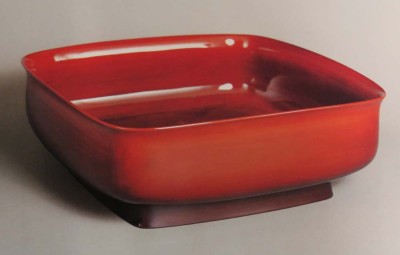
This candy dish isn’t even wood, it is molded lined impregnated with urushi. I cannot recall any artwork I have ever seen that I believe to be more captivating
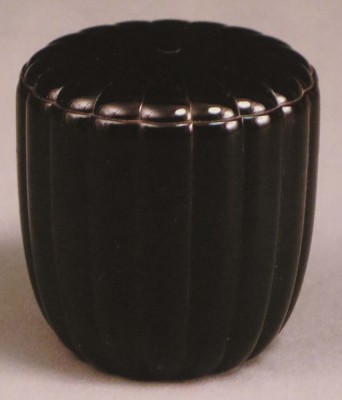
And this tea container is also molded fabric impregnated with urushi.
At roughly the same time as these pieces were being created in Japan, two Art Noveau luminaries were also employing urushi in their own masterpieces with sublime decorative surfaces.
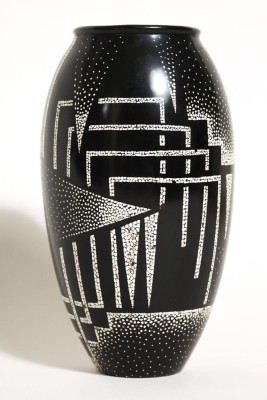
Jean Dunand not only employed urushi surfaces on his vases, he raised them from continuous sheets of copper prior to applying flawless lacquerwork. His production of lacquered folding panels was impressive.
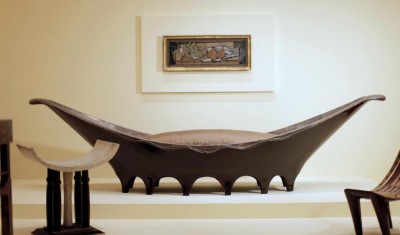
A contemporary and protege of Dunand, Eileen Gray, was applying urushi to an out-of-the-box inventory of creations.
To me the inspired use of urushi results in what is truly the ultimate decorative surface. It is wood finishing from another dimension. I aspire to this level of genius.
So, why don’t I?
There is a hitch. Urushi is the refined sap from the Japanese poison sumac tree. Were I to use this I would probably turn blue and curl up into a ball. But this will not stop me from experimenting with alternative technologies within which I can explore this sublime creation. Over the next weeks, months, years, and decades I intend to obliterate the boundaries of my own experience and creative skills by pursuing these techniques, everything from making and using lacquering brushes and spatulas to applying and perfecting the surfaces.
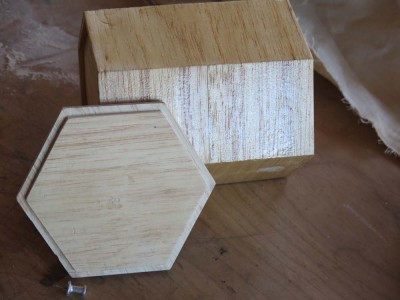



This is how I hope to grow old creating in the shop, making marquetry, faux finishes, japanning, and lacquerwork.
Stay tuned.


Join the Conversation!